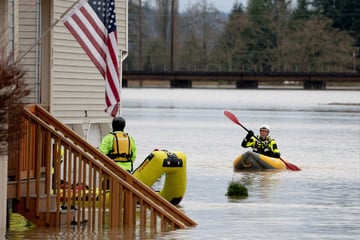Rock on: How crushed stone could help fight climate change
From sugar plantations in Brazil to tea estates in India, crushed rock is being sprinkled across large stretches of farmland globally in a novel bid to combat climate change.

The technique is called Enhanced Rock Weathering (ERW) and aims to speed up the natural capture and storage of carbon dioxide – a planet-warming greenhouse gas.
It is potentially big business with tech giants, airlines, and fast fashion firms lining up to buy carbon credits from ERW projects to "offset" or cancel out their own emissions.
ERW aims to turbocharge a natural geological process called weathering.
Weathering is the breakdown of rocks by carbonic acid, which forms when carbon dioxide in the air or soil dissolves into water.
Weathering occurs naturally when rain falls on rocks, and the process can lock away carbon dioxide from the air or soil as bicarbonate and eventually limestone.
ERW speeds the process up by using quick-weathering rocks like basalt that are ground finely to increase their surface area.
How effective is ERW?

ERW is still a fairly new technology, and there are questions about how much carbon it can remove.
One US study found that applying 50 tons of basalt to a hectare of land each year could remove up to 10.5 tons of carbon dioxide per hectare over a four-year period.
But scientists applying basalt to oil palm fields in Malaysia and sugarcane fields in Australia measured much lower removal rates.
"Field trials are showing that there have been overestimates of the amount and rate captured," said Paul Nelson, a soil scientist at James Cook University who has studied ERW.
Rates depend on variables including rock type and size, how wet and hot the climate is, soil type, and land management.
And measuring the carbon captured is difficult. The most popular technique measures "cations," positively charged ions that are released from the rock during weathering. But those cations are produced regardless of which acid the rock has reacted with.
"If there are stronger acids than carbonic, then it will react with those," said Nelson, so measurable cations are produced even when carbon dioxide is not captured.
That doesn't mean ERW is pointless, said Wolfram Buss, a researcher on carbon dioxide removal at the Australian National University, just that it needs to be carefully calibrated and measured.
"There is no doubt that this technique works," he said.
"However, to be sure how much carbon dioxide we actually remove, more funding is required to do fundamental studies."
Cover photo: Unsplash/Alberto Rodríguez Santana
